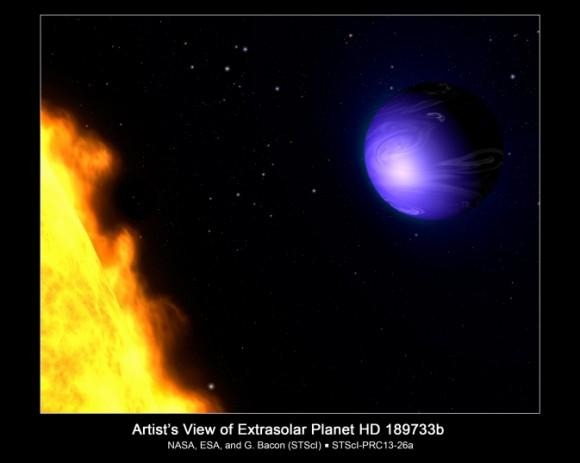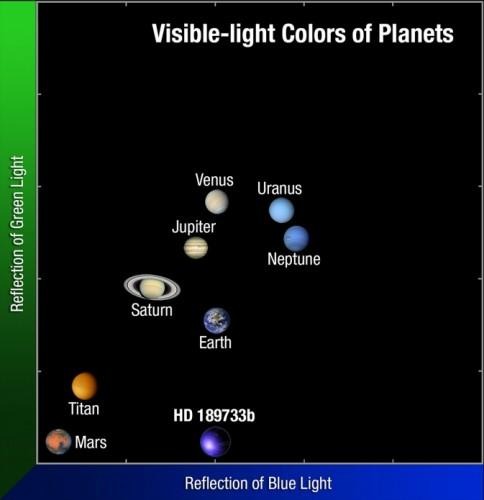Blue Planet With 2,000-Degree Glass Rainstorms Could Help Find New Earth
NASA's Hubble space telescope has identified the true color of a planet 63 light years away from Earth, a distant blue marble that, unlike our own planet, has torrential rainstorms of glass. HD 189733b, orbiting star HD 189733, would be seen by human eyes as a striking cobalt blue, the Hubble team says, ostensibly similar to Earth when viewed from space. However, in actual fact the exoplanet is one of a bizarre collection of "hot Jupiters" where temperatures can reach almost 2,000 degrees Fahrenheit (over 1,000 degrees Celcius).
It's that extreme temperature – caused by the planet's very close orbit to the star – that gives HD 189733b what's perhaps its most unusual feature: its storms of glass. The atmosphere is filled with silicate particles, NASA explains, and when they condense in the tremendously furious heat, they could rain down as tiny droplets of glass.
In fact, the potential glass storms could rage at up to 4,500 mph. It's the silicate that gives the planet its distinctive color, with the droplets scattering more blue light than red in the visible spectrum.

Scientists have known about HD 189733b since it was first spotted in 2005, when the exoplanet's unusual orbit was identified. Around 2.9m miles from its star, it is gravitationally locked and as such one side of the planet always faces it; the roughly 500 degree Fahrenheit difference between the bright and dark sides are what cause the violent winds.
HD 189733b is, unsurprisingly, not a candidate for supporting human life. However, the team responsible for figuring out its color believes that the same technique could be used again to spot planets more hospitable.

Frederic Pont, of the University of Exeter team in the UK who deduced the color, measured the changes in light before the planet passed behind the star, during that time, and then afterwards. "We saw the light becoming less bright in the blue but not in the green or red. Light was missing in the blue but not in the red when it was hidden" Pont said. "This means that the object that disappeared was blue."
The same system could help identify planets similar to Earth, however, with the blue color being used as a useful telltale for water and atmospheric conditions, Pont says. NASA plans to deploy the TESS telescope in 2017 to further that search.
